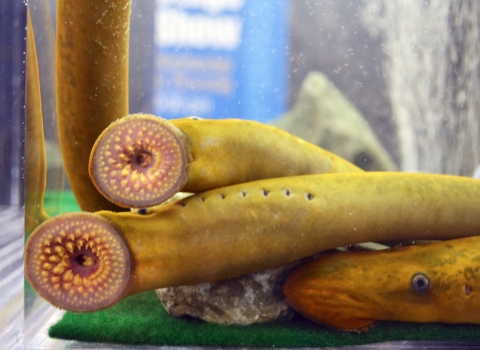The crisp air of early spring brushed through the trees at the Clarks River National Wildlife Refuge in Benton, Kentucky. The refuge, with its expansive wetlands and diverse wildlife, was the perfect setting for a milestone event that showcased the hard work of students, teachers, and conservationists from across the Commonwealth. The Kentucky Junior Duck Stamp Contest was celebrating its 30th year, marking a proud moment for everyone involved in the program since Kentucky first joined in 1995.
On that Tuesday, the spacious judging room was filled with anticipation. Over 700 pieces of artwork—each one a testament to the talent and passion of Kentucky’s students—lined the tables, showcasing waterfowl in all their natural splendor. The air buzzed with excitement as the judges took their seats, ready to review the stunning array of artwork from students in grades K-12.
Makenzie Foster and Marsha Hart, the Environmental Education/Outreach Specialists from Wolf Creek National Fish Hatchery, had traveled to Benton to help with the judging. As they sifted through the artwork, they marveled at the creativity and understanding of conservation that had clearly gone into each piece. From young children’s colorful depictions of ducks in flight to the more intricate work of high school seniors, every submission reflected a deep respect for the natural world.
But as the judges made their final decisions, one piece stood out above the rest.
Nick Boczek, a high school senior, had been participating in the Junior Duck Stamp contest for years. This year, his artwork—a breathtaking portrait of a King Eider duck gracefully skimming the surface of a serene pond—captured the judges’ attention immediately. It wasn’t just the technical skill that impressed them; it was the way his piece seemed to echo the quiet beauty of the wetlands.
Alongside the visual winners, the Conservation Message winner was announced. Paisley Carter had crafted a clever phrase that resonated with everyone in the room: “Get your ducks in a row, conserve our environment.” Her message was playful yet powerful, reminding everyone that environmental conservation should be a priority for all ages.
Both Nick and Paisley’s achievements were celebrated with enthusiasm, but the event was much more than just a competition. It was a moment for the Kentucky Junior Duck Stamp to shine a light on the importance of environmental education. The contest is more than an art competition; it’s an educational experience. With curriculum guides available for teachers, the program incorporates science, math, art, and technology to engage students in learning about conservation through creative expression.




